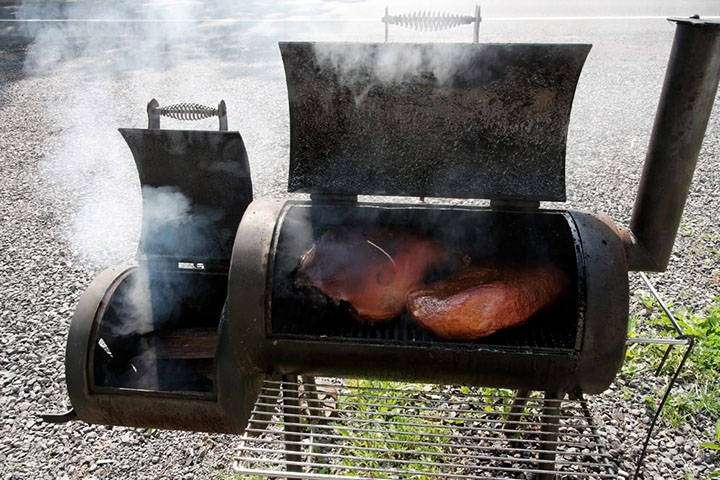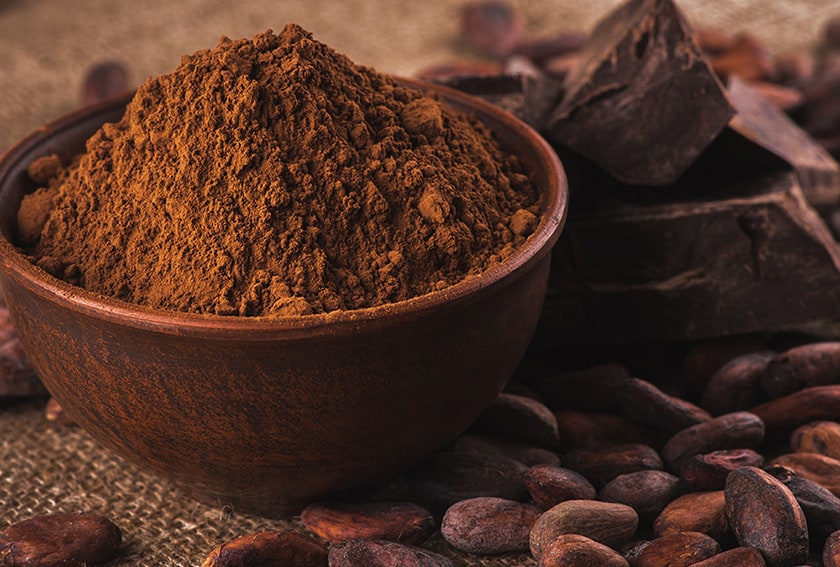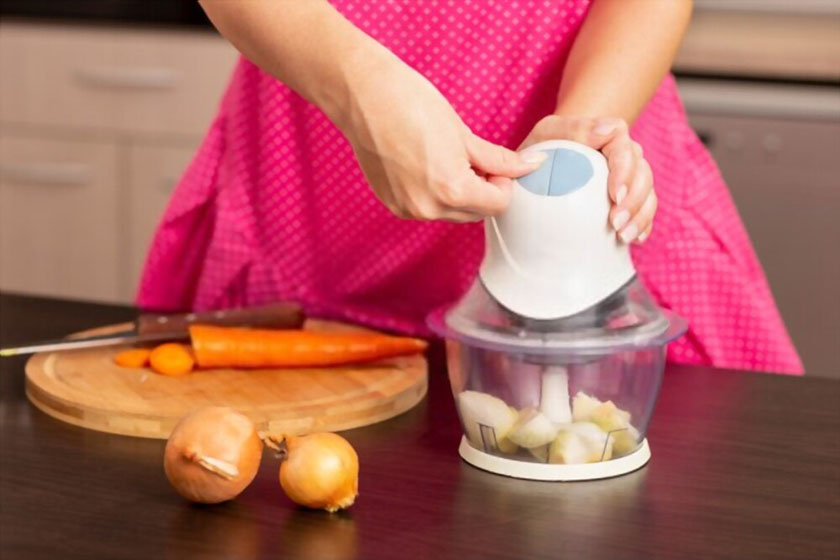I was just reading a four page discussion about how to cook brisket on the BBQ Breathren forum, which is an awesome place to talk ‘cue. They referenced our brisket, so I chimed in with a long list of things we’ve learned about cooking brisket. I thought that some of the folks on our site might be interested, so I’m reposting my response here. It was written hastily, so I’m sure it’s filled with errors. Still, might be helpful to some.
I was just poking around and saw this thread, and saw my brisket… so I thought I’d chime in. Maybe this will be helpful… maybe not. But here’s what we do:
First, there seems to be a lot of talk about the grade of brisket. What I can tell you is that the best quality brisket that I’ve been able to cook have been choice. Not prime. In my personal experience, prime packs a bit too much fat, and doesn’t render as well. The briskets we use are also called ‘natural’ – which is sort of a strange term, because it means something different to every company that stamps the word on the side of their box. The two words that seem to be universal, however, is ‘hormone free’ and ‘antibiotic free.’ The hormone free is probably the most important one for me. It seems less growth hormones mean smaller cows, and smaller briskets, which I prefer. For natural sourcing, I’ve used beef from Creekstone, Meyer, and Niman. Meyer and Niman only produce ‘natural’ beef, Creekstone has a natural and a commodity line.
To trim we cut all but about 1/4 an inch of fat off the flat, remove the divot of tough fat near the connection of the flat and the point, on the topside of the brisket. We trim off excess fat at the very tip of the point and running along the side. If any bits of muscle seem grey or dry, cut them off. On the side, you might notice a large channel of fat running between the flat and the point. It’s generally pretty tough stuff. I find that it’s smaller on the naturals, and can be massive on commodity beef. You can cut some of this out, but understand that if you do, it will increase the surface area of the brisket, could potentially alter the cook time, and might make it ugly, which is the worst. If you’re using a small brisket, this channel shouldn’t be super large. If it is, you can cut a bit away, but I wouldn’t fuss with it too much. It’s better to just cut it out during service. On the underside, you might have a giant wedge of nasty connective tissue and fat. Just lob that whole thing out. It’s useless. Also, we like briskets under 12lbs, and like to see a nice thick flat, with a good layer of fat. Also, a minimal slope between the flat and point is best. It’ll cook more evenly.
For rub, we just use salt and pepper. Specifically we get whole Tellicherry peppercorns and run them through an old BUNN coffee grinder, then pass that through a sieve – the dusty pepper debris is used for other cooking at the restaurant, while the nice large bits go into our rub. We do this daily. We also use Morton’s kosher salt. You can use Diamond too, but understand that the salinity is higher, and the crystals are smaller, so you’ll have to adjust your rub. I’d suggest starting at 50/50 by weight, and adjust to your taste from there. Also, always do rubs by weight. Volume is worthless if you want to be consistent.
Season the meat as you see fit. For our beef ribs, we use like, a half a teaspoon of rub on a whole rib. Basically nothing. For briskets, we pack it on. Not all places do. Some go sparingly, others dredge. Total preference. Next, we let the brisket sit in the for a day or two (depending on the size), to let some of the salinity penetrate and to form a pellicle. Then it’s time to smoke.
I think this is the hardest thing to talk about. Every day at the restaurant folks will ask what temperature we cook at. I have no problem disclosing, but I feel that I’m doing a disservice because our temperatures are what our smoker needs to work well, and one size doesn’t fit all. I used to have a small kettle smoker, and and then a mid-sized offset from Home Depot. Both needed an entirely different set of time and temperatures. What I can say is this. The bigger smoker, the easier it will be to net a great product. Smaller smokers tend to have thinner the walls which will lead to tons of fluctuation during the cook. Fluctuation sucks. Your briskets hate it, and so will your guests. So, if you can get an insulated smoker, get one. If not, try putting some bricks on and around your firebox, or wrap the whole thing in metal insulation. You can throw firesafe moving blankets over the cook chamber. The point is, hold the heat in. Get creative. But understand that holding heat isn’t the same as cutting off airflow and oxygen. You should allow your fire to get the oxygen it needs or it will start to smolder and produce acrid smoke. Not tasty.
Ok, on to the cook:
We start cooking at a low temperature, which will make your wood smoke more. The pellicle will help trap the smoke. We use wood aged for about one and a half years. We use all white oak, no charcoal or lighter fluid. The wood is pretty dry stuff. It burns really clean. Not much silty smoke. We’ll go low for a few hours, maybe 4 depending on the size of the briskets, then we’ll crank the heat into the 250 – 260’s for another 4, and will finally go up to 310 – 325. We also wrap our briskets with butcher paper when they get a nice color. Wrapping them tightly will hold in more moisture and induce a bit of a braise, wrap them loose and the paper will release more fat. Up to you. That last cycle at the end seems that it would burn the briskets, and maybe if you have a small smoker it will, so be careful, but for us it actually sort of cauterizes the meat. It allows us to sear the outside, which I’ve found helps retain more moisture on the inside, especially in the flat. When it’s done we’ll let them breath for a moment on the smoker, then I’ll rest them for around 4 hours before we serve them. Save the butcher paper, you can use it to light the fire next time.
It should also be said that I like to serve super tender brisket. Many places prefer much more of a steaky texture. That’s totally preference, but it’s not mine.
Anyway, I hope this is helpful. My biggest take aways are:
- The quality of the beef has a huge impact on the final product. Call the meat companies, figure out who is the local distributor, and drive there. Coerce them into selling you a nice ass brisket. Ask them to go inside the plant and pick one.
- What we do, or any of the other BBQ guys do, is ALWAYS slave to the smoker. You’ve got to, got to, got to keep working to understand your cooker. That’s the key.
- No dirty fires, no dirty smokers, clean it all, season it. Treat it like precious cast iron cookware.
- Insulation is your friend.
- A good brisket doesn’t need much seasoning.
I don’t know what else. I hope this is helpful. Feel free to write back if there are any questions.




